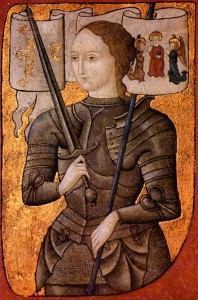Although the French king, Charles VII, did little to save the life of Jeanne d’Arc, he used the succeeding years to strengthen his position in France. In 1444, Charles and the then king of England, Henry VI signed the Treaty of Tours, which guaranteed a temporary truce between the two countries, the marriage of Margaret of Anjou to Henry, and the transfer of the province of Maine to Charles. As happened to so many of the truces of the Hundred Years War, it did not offer the prospect of a permanent settlement. Margaret was only a distant relation to the French throne and she was impoverished therefore coming without a dowry. When Henry attempted to renege on the transfer of territory, Charles threatened by collecting a large army and by 1448 Henry acquiesced.
03f Battle of Formigny 15 April 1450
Département: Calvados
Region: Basse-Normandie
Country: France
A French Battlefields “Virtual Battlefield Tour” [This battlefield is not included in Fields of War.]
Summary: Hostilities recommenced in June 1449 with the reorganized French Army taking advantage of the weakened English by capturing major cities in Normandy including Rouen, Harfleur, Honfleur and Lisieux. Their next objective was Caen.
The English gathered a small army of about 3,000 men under the command of Sir Thomas Kyriell and left Portsmouth for Cherbourg landing there on 15 March 1450. Kyriell marched south to capture Valognes as the 5,000-man French Army, under Charles I de Bourbon, Comte de Clermont, marched towards Carentan. Kyriell circled around Carentan, refusing to offer battle, and was heading for Bayeux when he entered the village of Formigny on 14 April. The main French force under Charles followed from Carentan towards Bayeux along the later famous National Road 13 as a smaller, but French force of 1,200 fully mounted men under Arthur de Richemont was approaching from St-Lô.
View Battle of Formigny: 15 April 1450 – A Virtual Battlefield Tour by French Battlefields (www.frenchbattlefields.com) in a larger map

